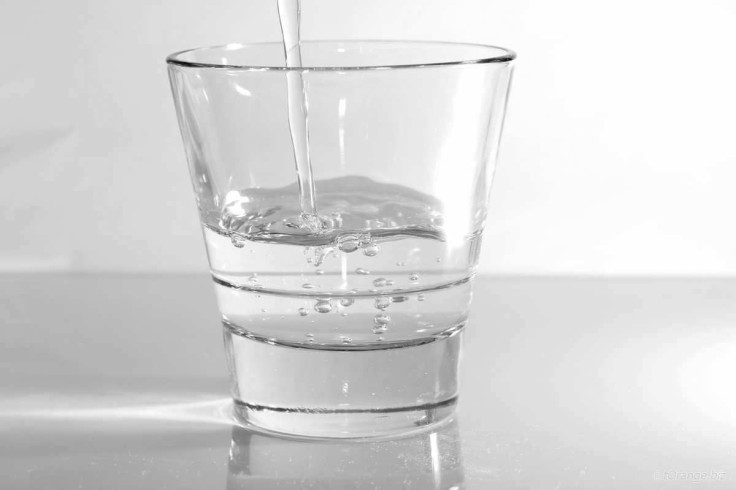Erin Brockovich's Chromium-6 Is Polluting Your Drinking Water: How To Keep It Safe

For roughly two out of three Americans, a tasteless, odorless element in water may be putting their health at risk.
That’s at least according to an analysis of data from water sources released last month that found chromium-6, a metallic element made famous by environmental activist Erin Brockovich, exists at levels that exceed standards accepted to be safe for human consumption. The analysis, conducted by the Environmental Working Group, an independent advocacy group, analyzed Environmental Protection Agency data from across the country and found that about 218 million people are living with drinking water that contains chromium-6 at higher levels than public health goals.
California became the first state in 2014 to issue maximum contaminant level drinking water standards (10 parts per billion). The federal government is much less strict and only mandates a 100 part per billion cap. Environmentalists and public health advocates are much keener on the California standard. Consumers can protect themselves by buying water filters to keep the element out of their drinking water.
Chromium-6, also known as hexavalent chromium, became a well-known drinking water contaminant with the story of Brockovich, a law clerk for a firm that brought a case alleging hexavalent chromium contamination in Hinkley, California. The case was settled in 1996 for $333 million. A movie starring Julia Roberts was later made about Bockovich.
The International Business Times caught up with David Andrews, a senior scientist at Environmental Working Group, to discuss the recent analysis.
Chromium-6 Sounds Pretty Horrifying. How Troubling Are These New Findings? Do I Need To Stop Drinking Water?
There are a few parts of this. One is that there’s significant variation in testing results across the country. The values differ by three-plus orders of magnitude. You have values that were “non-detect” up towards even 100 parts-per-billion (ppb). As we get to that high end we definitely think there’s a level of concern there that people should consider getting additional filtration. One of the aspects we considered when putting together this report was really looking at our regulatory system and the way the EPA completes a health assessment on these chemicals and incorporates new scientific standings.
That’s one of the underlying concerns we have is that the agency determined the applied standard for chromium-6 in 1991. And that was based on the potential for skin irritation. It doesn’t incorporate the studies done in the last decade, two decades that indicate that chromium-6 is a carcinogen.
What Levels Should People Worry About?
We don’t draw any bright line in the sand and say, “above this line you have to go buy a filter.” But the concerns sail as the concentration increases. If you have a value of .02 (ppb) you have the potential of one excess cancer per million (people in a population) and 2 parts-per-billion in drinking water would represent 100 excess cancers per million over a lifetime.
Why Is This Stuff In Our Drinking Water? What Makes It And Who Can I Send My Future Medical Bills To?
There are different potential sources. Chromium is a naturally occurring element and depending on the groundwater conditions and where the water is sourced from there’s potential that some or all of the chromium-6 in these samples comes from naturally occurring sources. Hexavalent chromium is also used industrially. It’s used in coal plants. It’s also been used for chrome plating and a number of other things including making pigments.
Pinpointing the exact source for each of these or even a look across the country hasn’t been done at this point.
So, it’s a bit of an unknown, at the same time, places that are elevated or have much higher levels than their surrounding communities. I think the burden typically falls to the regions local utility to investigate the source of that pollution or contamination of the water or when levels are higher, it’s reasonable to consider community level filtration.
Is This A Unique Problem To Chromium-6?
Part of where we were going with this is calling on the EPA to take action to establish a drinking water standard that incorporates this more recent science.
There are a large number of potential drinking water contaminants… there are most likely more that we don’t necessarily know about that occur at different frequencies across the country but it’s making that connection from that one chemical to the drinking water in general.
Some People Have Said That Your Report Is Using Scare Tactics. What’s Your Response To Allegations That You’re Manipulating Data
I want to point out that our report is a compilation of EPA testing, so we didn’t do the testing. The values that we put in there from the public health goal to other regulatory standards are based on other scientific work and we’re really highlighting the fact that our federal regulation is based on the skin reactions. The federal standard is not based on the potential to cause cancer. I think we’re really raising awareness at this point.
What Can People Worried About This Do?
Filtering does work on either the community level at a water treatment facility or at home. The two types of home water filters that work – there’s an inexpensive pitcher type that uses an ion exchange and is certified to remove chromium-6 the other commonly used technology is the reverse osmosis filter. That is also certified to remove chromium-6.
The added benefit of the home water filter is that it will filter out the other unregulated contaminants and other regulated contaminants.
This interview has been edited for clarity and length.
© Copyright IBTimes 2024. All rights reserved.












